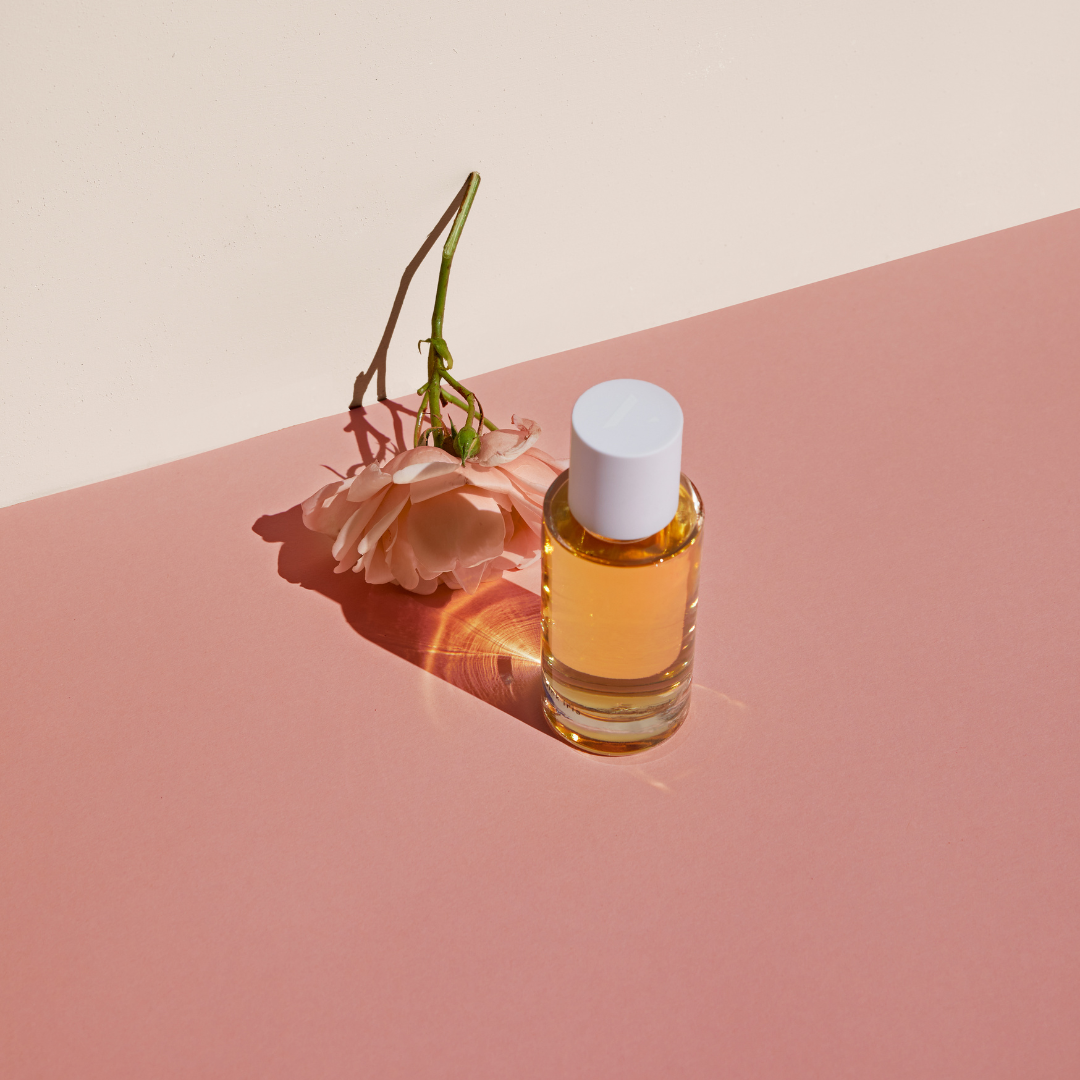The world of perfumes is a vast universe, with eau de toilette, eau de parfum and extrait de parfum all being very different. Which one should you go got? Let us help you out and stay till the end for perfume tipps 😉!
Today, we're skipping the complicated perfume-making process and moving straight on to the different types of fragrance and their main differences!
There are several types of fragrance, the main difference being the alcohol percentage. Indeed, the concentration of alcohol and aromatic compounds influences fragrance intensity and longevity. The higher the alcohol concentration, the shorter the longevitiy of the fragrance will last. But that's not all! In fact, even if concentration has a huge influence on staying power, it's not the only criterion to consider. Fresh notes, such as citrus, have light molecules, while head notes, such as amber or vanilla, have heavier, less volatile molecules!
Eau de toilette is generally fresher than eau de parfum, and richer in top notes. This type of fragrance is mainly applied to clothing, due to its lightness and low impact on the skin. It can be used as a complement to eau de parfum or perfume extract. Eau de toilette usually contains between 5 and 15% concentrate in 80-degree alcohol.
Eau de parfum is one of the most widely used fragrances, and a good compromise between eau de toilette and extrait de parfum. The latter can be quite expensive, and eau de toilette, which does not evolve over time and has very limited staying power. Eau de parfum contains between 10 and 20% perfumer's concentrate in 90-degree alcohol. The high concentration of this fragrance enables it to evolve on the skin, moving more slowly from the top notes to the heart and base notes. Eau de Parfum evolves according to body temperature and skin pH.
Discover Abel, a 100% natural eau de parfum brand, and Bastille, a 95% natural French brand.
Extrait de parfum is the richest and most concentrated of all, and is the true identity of a fragrance. As a rule, an extract contains 20 to 40% concentrate in 98-degree alcohol. The essential oils are weighed and combined, and these raw materials are coordinated to create intense middle and base notes. In most cases, perfume extracts are not really sold in spray bottles, but are worn directly on the skin, as they evolve in the same way as eau de parfum, only more intensely. It leaves a particularly satisfying scent and hold.
Discover the brand Versatile, for alcohol-free extraits de parfum.
How to make your perfume last longer:
At J'adore Bio, we're committed to offering you the best advice, so these are our tips for making your perfumes last longer and turn heads in the process!
- Apply your fragrance to skin that's always perfectly moisturized: the fragrance molecules cling better to moisturizing products, so the fragrance holds much more easily all day long!
- Apply your fragrance to pulse points! The warmth of the skin amplifies its diffusion. Pulsation points are: the hollows of the wrists and elbows, at the base of the ears, at the base of the hair and in the hollow of the neck, and of course in the décolletage.
- Don't rub your skin after spraying your fragrance. The friction created by rubbing heats the skin, which then produces natural enzymes that modify the fragrance's evolution. The notes most affected are the top and middle notes, as well as the dry-down process (the last, longest diffusion period of your fragrance). We therefore recommend that you apply your fragrance and leave it alone, letting it evolve naturally! Please note that this does not apply to alcohol-free perfume extracts, such as Versatile.
Now that you know everything, it's up to you to turn heads and leave your olfactory identity in everyone's memories!
Emilie Engel

